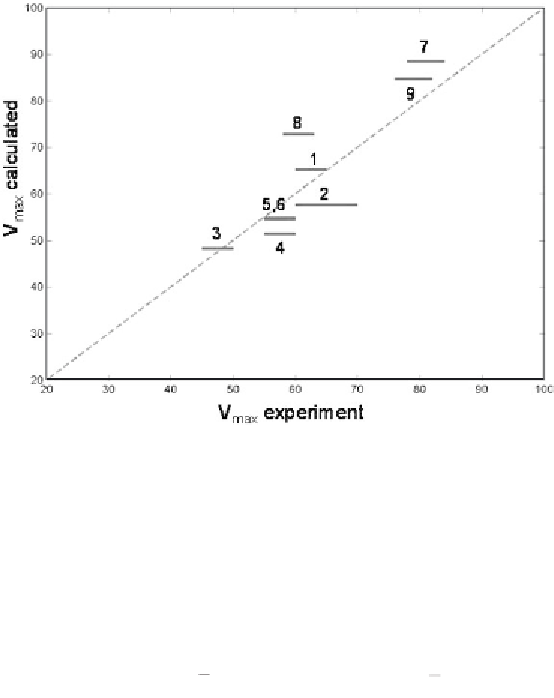Biomedical Engineering Reference
In-Depth Information
Figure 4.17
Comparison of
V
max
between experimental results and PQRS model.
or fluid, the electrowetting principle will only be effective between the two limits
V
min
and
V
max
.
It is very convenient here to use the PQRS model to express
V
max
as indicated
in (4.25)
1
1
2
γ
æ
ö
æ
2(
γ γ
-
cos
θ
)
ö
2
2
SL
,0
SG
LG
0
V
=
=
ç
ç
÷
÷
max
è
ø
è
C
ø
C
The advantage of this model is to produce an analytical relation for
V
max
,
which, combined with the
V
min
model, indicates the maneuverability interval for
any droplet in open EWOD systems. The maximum actuation potential depends on
the microfabrication of the chip through the capacitance
C
and the surface tension
of the substrate
g
c
, and on the interfacial properties between the liquid and the sur-
rounding fluid, through the term
g
cos
q
0
. A good agreement between experimental
and calculated values for
V
max
has been found in [20].
It is interesting to bring together the equations defining the values of
V
min
and
V
max
. The minimum potential corresponds to the potential required to overcome
the contact angle hysteresis and displaced drops by EWOD; the maximum poten-
tial is linked to the saturation limit. The domain for EWOD workability is then
given by
2
CV
2
γα θ
sin
<
<
γ γ θ
-
cos
(4.40)
0
C
0
2
At this stage, we remark that the interval [
V
min
,
V
max
] depends on the capaci-
tance
C
as shown in Figure 4.18. Microdevices with thinner layers of dielectric
have a larger capacitance and require a lower level of actuation. There is a clear



